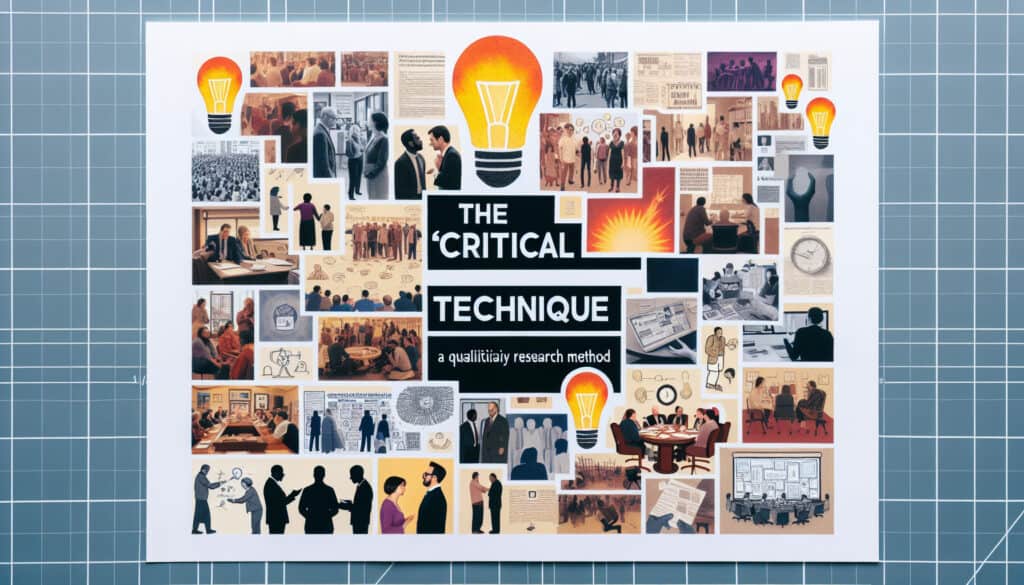A qualitative research 方法 that involves collecting detailed information about significant real-world 事件 (incidents) from observers or participants.
- 方法: 工程, 解决问题, 质量
Critical Incident Technique

- 持续改进, 六西格玛设计(DfSS), 设计思维, 人机交互, 质量管理, 可用性, 可用性测试, 用户体验(UX), 以使用者為中心的設計
Critical Incident Technique
- 持续改进, 六西格玛设计(DfSS), 设计思维, 人机交互, 质量管理, 可用性, 可用性测试, 用户体验(UX), 以使用者為中心的設計
目标
如何使用
- Interviewers ask users or employees to describe specific instances where they experienced a particularly positive or negative outcome while performing a task, along with the context and consequences.
优点
- Gathers rich, contextualized data about real-world user behaviors and problems; helps identify key factors that lead to success or failure; provides specific examples for design or training improvements.
缺点
- Relies on participants' memory, which can be inaccurate or biased; incidents may be rare and not representative of typical use; analysis of qualitative data can be time-consuming.
类别
- 人体工程学, 人力资源, 产品设计, 质量
最适合:
- Understanding the key factors that contribute to successful or unsuccessful outcomes in a user's interaction with a system.
The Critical Incident Technique (CIT) is particularly adaptable in user experience research, usability testing, and workplace productivity evaluations across various sectors, including healthcare, education, software development, and customer service. The methodology is often employed during early project phases to inform design decisions or during iterative testing stages to refine existing systems. Typically, the initiation of CIT can be spearheaded by user experience researchers, product designers, or human factors engineers who seek to gather detailed qualitative data directly from users or employees. Participants in this methodology are primarily users of the product or system in question, as well as employees who interact with the process, offering authentic insights into their experiences. An example application in the healthcare sector could involve interviewing nurses about critical incidents they encountered while using Electronic Health Record (EHR) systems, which can reveal pivotal factors that either enhance or undermine patient care due to usability issues. By documenting both positive and negative incidents, teams can establish a clear understanding of systemic barriers and successful strategies that lead to improved user interactions, thus laying a foundation for targeted design improvements and training initiatives. The real-world rich data achieved through CIT allows organizations to make informed decisions grounded in actual user experiences rather than assumptions or generalized feedback.
该方法的关键步骤
- Identify specific tasks or interactions to investigate.
- Prompt users or employees to recall significant incidents related to those tasks.
- Encourage elaboration on the context of each incident.
- Ask for details about the outcomes and consequences of the incidents.
- Explore the user's feelings and thoughts during the incident.
- Request clarification on what contributed to the success or failure in the situation.
- Analyze the collected incidents for common themes and patterns.
- Prioritize identified factors based on their impact on user experience.
专业提示
- Leverage follow-up probing questions to delve deeper into the emotional and situational context of reported incidents, enriching the understanding of user motivations and reactions.
- Utilize thematic analysis on collected incidents to uncover underlying patterns and trends that can inform both design choices and training interventions.
- Incorporate multi-modal data sources (e.g., observational data, task analysis) alongside incident interviews to validate findings and uncover discrepancies between perceived and actual user experiences.
历史背景
1962
1970
1972
1980
1980
1986
1986
1960
1963
1970
1980
1980
1980
1986
1987
(如果日期不详或不相关,例如 "流体力学",则对其显著出现的时间作了四舍五入的估计)。















相关文章
肌肉骨骼不适调查表
多变量测试(MVT)
多元回归分析
动作捕捉系统
MoSCoW 方法
情绪中值测试